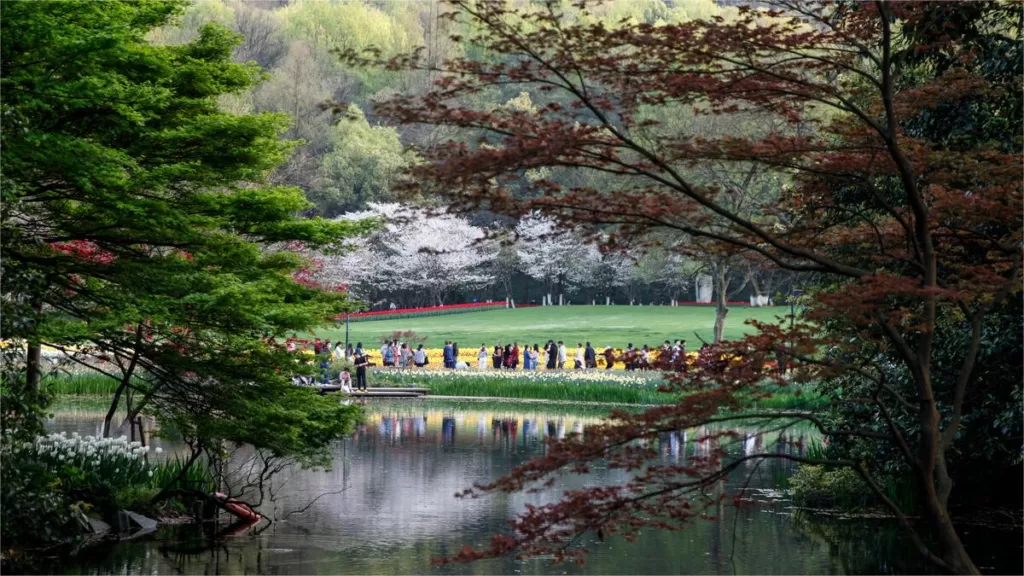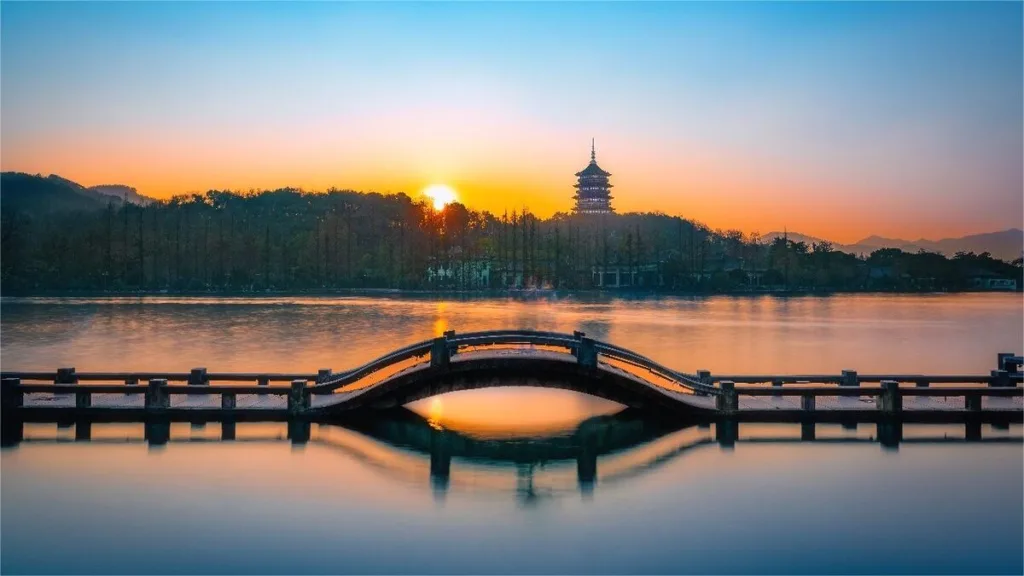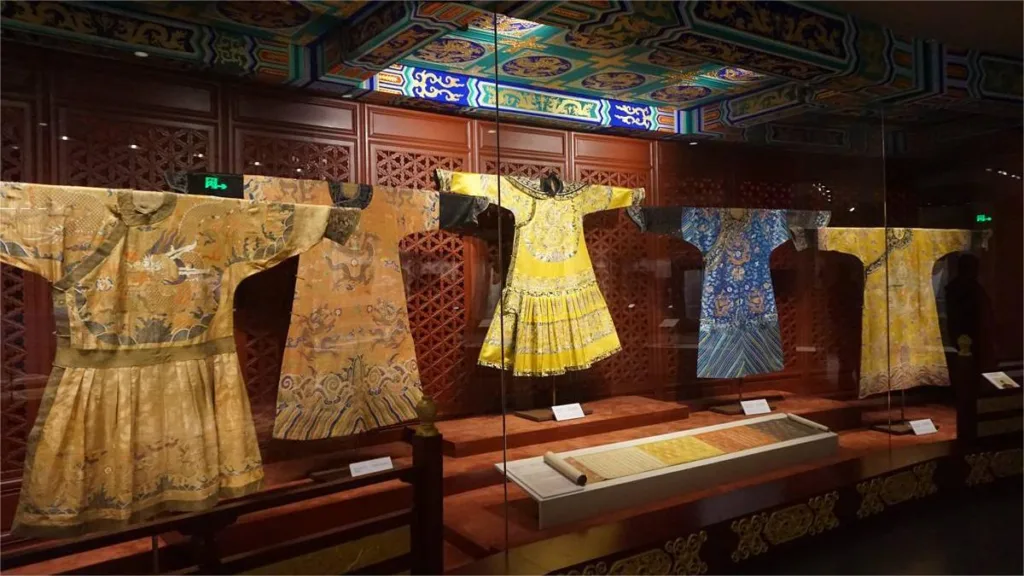Nanping Evening Bell (南屏晚钟) refers to the ringing of the bronze bell at Jingci Temple near Nanping Hill in Hangzhou, China, during the evening hours. Nanping Hill, known for its lush forests and sheer cliffs resembling a screen, stands behind Jingci Temple. The term “evening bell” specifically refers to the tolling of the bronze bell housed within Jingci Temple. Nanping Evening Bell is one of the earliest sights among the Ten Scenes of West Lake. It was immortalized in a painting titled “Nanping Evening Bell” by the Northern Song dynasty painter Zhang Zeduan.
Origin of the Name
Jingci Temple, established in the early years of the Northern Song dynasty in 954 AD, had a bell tower from its inception. In the 11th year of the Hongwu era during the Ming dynasty (1378 AD), the abbot found the old bell too small and decided to recast a new bell, which weighed a staggering 10 tons. This new bell produced a resounding and far-reaching sound, especially since Nanping Hill behind the temple had many hollow spaces, allowing the bell’s sound to reverberate through the caves and echo across the valleys, reaching even the outskirts of Hangzhou. During Emperor Kangxi’s southern inspection tour in the Qing dynasty, the bell’s majestic sound at dusk, amidst the clear night air and utter silence, impressed him deeply. As a result, the bell was renamed “Nanping Evening Bell.”
Demise and Rebirth of the Scene
Unfortunately, the original bronze bell disappeared silently during years of continuous warfare, and its toll remained silent for nearly a century. The current bell was recast with the assistance of donations from the Japanese Buddhist community in 1984. On December 14, 1984, in gratitude for ancestral blessings, Engakuji Temple, a major temple of the Soto Zen school in Japan, donated 30 million yen. The Hangzhou Oxygen Generator Factory cast a new bronze bell, identical in size to the Ming dynasty bell, as a symbol of Sino-Japanese friendship. This process took two years to complete. The bronze bell measures 3.6 meters in height, 2.3 meters in diameter, and weighs over 10,000 kilograms. Its design is simple and ancient, with over 68,000 characters from the Mahayana Lotus Sutra cast onto its surface. Each strike of the bell produces a lingering resonance lasting up to 2 minutes.
In 1986, the “Nanping Evening Bell,” which had remained silent for a century, was revived. On the morning of November 21, 1986, at around 10 a.m., the bell rang 108 times with a majestic and solemn sound, echoing across the mountains and the azure lake of Hangzhou, announcing the rebirth of the “Nanping Evening Bell.”
New Ceremony
Every New Year’s Eve, people from all walks of life in Hangzhou, along with foreign guests, overseas Chinese, and tourists, gather inside and outside the bell tower of Jingci Temple to participate in the bell-ringing ceremony to bid farewell to the old year and welcome the new year. As the 108th bell tolls, signaling the beginning of the new spring, this activity symbolizes peace, joy, stability, and unity, injecting new meaning and charm into the ancient Nanping Evening Bell.
Vlog about Nanping Evening Bell
Attractions near Nanping Evening Bell







